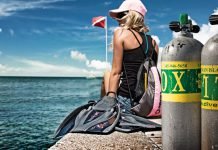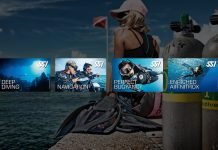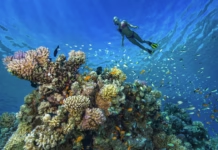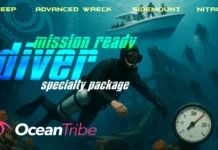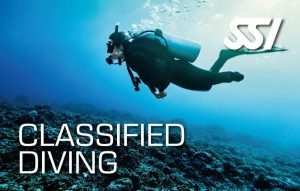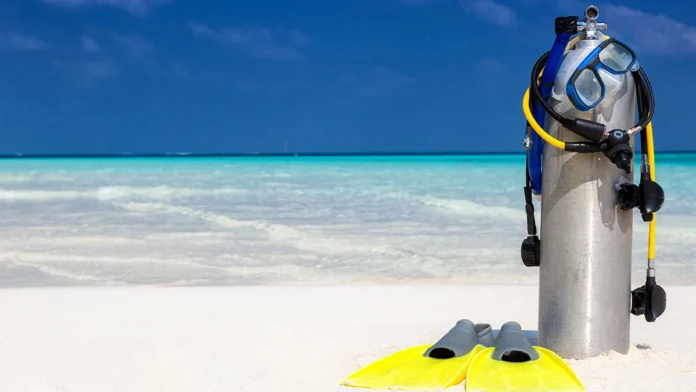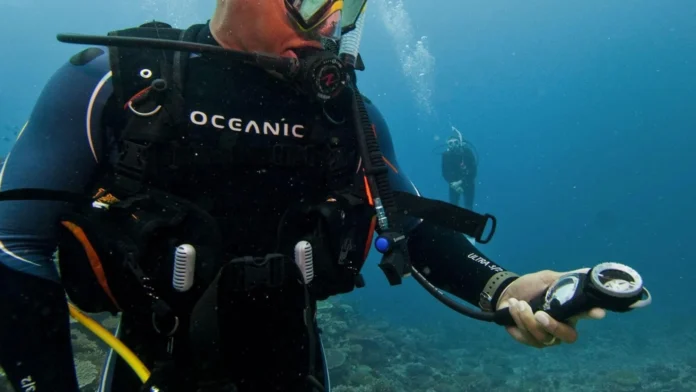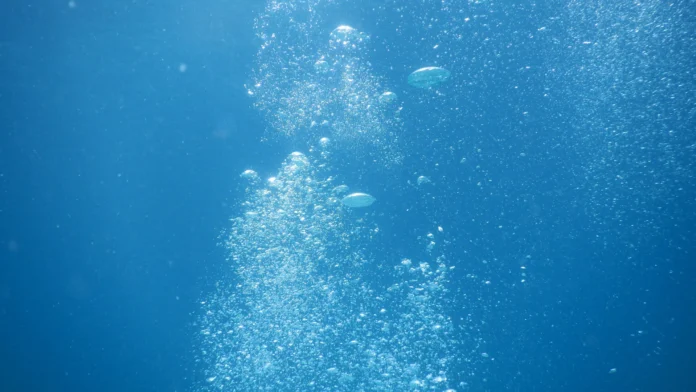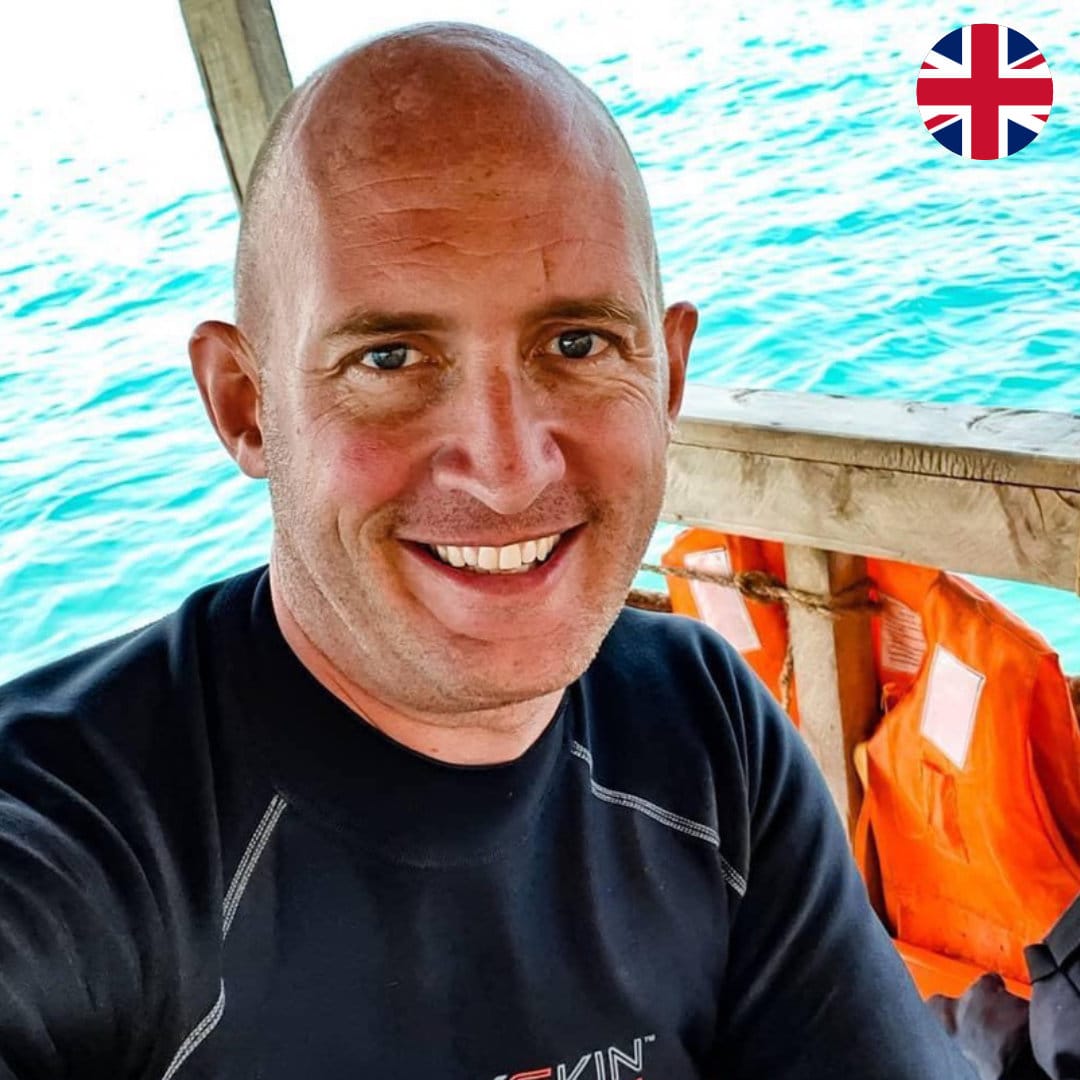Wetsuit thickness for diving in Kenya? Diving in Kenya offers warm tropical waters, colourful reefs, and exciting encounters with turtles, dolphins, and whale sharks. Yet even in paradise, water temperature matters. Choosing the right wetsuit thickness will keep you comfortable and allow you to enjoy longer dives without shivering.
Kenya’s water temperatures
The Indian Ocean along Kenya’s south coast, including Diani Beach and Kisite Marine Park, stays warm all year. On average, surface temperatures range from 25°C to 29°C. The warmest period is November to April, while June to September can feel slightly cooler due to seasonal winds and currents.
Because the water is so inviting, many divers underestimate how quickly body heat is lost. Even a few degrees difference can affect your comfort, especially if you are doing multiple dives a day.
Recommended wetsuit thickness
Shorty wetsuit or 2 mm suit
During the warmest months, a shorty or thin 2 mm wetsuit can be enough for dives. Many divers enjoy the freedom of movement and lighter feel. However, if you plan to do two or three dives in a day, you may notice a chill setting in by the later dives.
3 mm full wetsuit
This is the most popular option for diving in Kenya. A 3 mm suit gives you the right balance between insulation and flexibility. It also provides full-body coverage, which helps protect against jellyfish, fire coral, or accidental reef contact.
5 mm full wetsuit
A 5 mm suit is the choice for divers who know they get cold easily. It is also the best option during the cooler months from July to September. Technical divers or those making deeper dives often prefer the extra warmth and comfort of a 5 mm.
Thermal rashguards and alternatives
Some divers prefer high-tech thermal rashguards instead of traditional neoprene. Brands like Sharkskin, Lavacore, and Fourth Element Thermocline use fleece-lined materials that trap a thin layer of warm water next to the skin.
These suits are neutrally buoyant, so you don’t need to adjust your weights as much as with neoprene. They also dry faster and pack down smaller, making them perfect for travel.
In Kenya, thermal rashguards can work well for warm months, single dives, or snorkelling. However, for multiple dives a day or during the cooler season, most divers will still find a 3 mm wetsuit more reliable for staying warm. Many divers combine both, using a Sharkskin top under a 3 mm suit for extra insulation without adding bulk.
Other considerations
Number of dives
If you plan on making multiple dives in a single day, your body will gradually cool. Even in warm tropical waters, repeated immersion lowers core temperature. A thicker wetsuit helps reduce fatigue and lets you stay warmer over several dives.
Depth
Water temperature often drops as you descend. While the surface may be 28°C, the temperature at 30 metres can feel several degrees cooler. If you are diving deeper wrecks or walls, the extra protection of a thicker suit is helpful.
Body type
Slim divers usually lose heat more quickly than stockier divers. If you know you are prone to feeling cold, lean toward a 5 mm even when most divers are comfortable in 3 mm suits.
Exposure protection
A wetsuit is not only about warmth. A full suit shields your skin from stings, scrapes, and sunburn between dives. This makes a long-sleeved full suit more practical than a shorty for many divers.
Do you need gloves, hoods, or boots?
In Kenya’s tropical conditions, most divers only wear dive boots with open-heel fins. Hoods and gloves are rarely necessary unless you feel the cold or are doing technical dives. Many dive operators also prefer/require divers not to use gloves, as this will encourage divers to avoid reef contact.
Renting vs bringing your own
Most dive centres in Kenya, including Ocean Tribe, provide rental wetsuits in good condition. If you prefer a personal fit, bringing your own 3 mm suit is ideal. For frequent divers, investing in a lightweight travel wetsuit makes sense.
FAQs
What thickness wetsuit is best for Kenya diving?
A 3 mm full wetsuit suits most divers year-round, with 5 mm being useful for cooler months or those who feel cold easily.
Can I dive in just a rash vest or swimsuit?
Yes, but only for short dives, or if you have good resistance to water cooling. You may get colder on repetitive dives.
Do dive centres in Kenya rent wetsuits?
Yes, most centres offer shorty or long rental wetsuits in 3 mm or 5 mm thickness.
Will I need a hood or gloves?
Not usually. Boots are enough, and gloves are often discouraged to help protect the reef.





